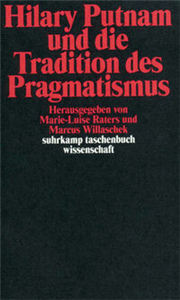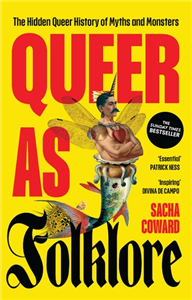Your Search Results
-
Editora Hercules
A brazilian publishing house focused on selfhelp literature, esoterism and masonry and children's books. Our mission is to offer through words moments of unwinding and tranquility attached to a philosophical and esoteric learning experience. In this special edition of the Frankfurt Book Fair we will be displaying our new releases in the children's literature section, such as The Dreamy Dragon and The crystal Egg, by the brazillian actress and writer Norma Blum.
View Rights Portal
-
Promoted Content
-
Promoted Content
-
 Trusted Partner
Trusted Partner
-
 Trusted Partner
August 2013
Trusted Partner
August 2013Nähen im Zakka-Stil
24 Projekte von Künstlerinnen aus aller Welt
by Herausgegeben von Coleman-Hale, Rashida; Übersetzt von Schmidt-Wussow, Susanne
-
 Trusted Partner
Trusted Partner
-
 Trusted Partner
February 2002
Trusted Partner
February 2002Hilary Putnam und die Tradition des Pragmatismus
by Marie-Luise Raters, Marcus Willaschek, Richard J. Bernstein, Jennifer Case, Axel Mueller, Christopher Hookway, Karl-Otto Apel, Kathrin Glüer, David Macarthur, James Conant, Ruth Anna Putnam, Ralph Schumacher, Hans Joas, Jürgen Habermas, Hilary Putnam, Klaus Oehler, Michael Quante, Günter Abel, Robert B. Brandom, Steven Gross
Hilary Putnam ist einer der originellsten Philosophen Amerikas. Seit Beginn der 80er Jahre hat sich sein Denken zunehmend pragmatistischen Positionen angenähert und damit maßgeblich zur gegenwärtigen Renaissance des Pragmatismus beigetragen. In diesem Sammelband setzen sich führende Philosophen aus den USA, England und Deutschland mit Putnams Werk und dessen Verhältnis zum Pragmatismus auseinander (u. a. G. Abel, K.-O. Apel, R. Bernstein, R. Brandom, J. Conant, J. Habermas, C. Hookway, H. Joas, K. Oehler, R. A. Putnam). Putnam hat eigens für diesen Band eine Replik auf die Kritik von Jürgen Habermas verfaßt.
-
 Trusted Partner
Humanities & Social SciencesOctober 2006
Trusted Partner
Humanities & Social SciencesOctober 2006Blair’s community
Communitarian thought and New Labour
by Sarah Hale, Chantal Hamill
Blair's community is an exciting and timely book which challenges the accepted wisdom about the role of communitarian thought in the development of New Labour under Tony Blair. From the mid-1990s there has been a widespread view that Labour policies have reflected, or even been influenced by, the work of communitarian writers like Amitai Etzioni and John Macmurray, and philosophers such as Alasdair MacIntyre and Michael Sandel. The book begins by establishing that such a view was widely, and frequently unquestioningly, held, in both popular and academic forums. It then identifies reasons for the persistence of this impression, the evidence on which it was based, and the understandings of communitarianism used by commentators. The book argues that existing accounts of 'New Labour's communitarianism' fail to present an accurate picture because they are - in some cases explicitly - working with a generic or composite conception of communitarianism which bears little relation to the work of the communitarian writers whose names have been associated with the party. ;
-
 Trusted Partner
Humanities & Social SciencesJuly 2018
Trusted Partner
Humanities & Social SciencesJuly 2018The Third Way and beyond
by Sarah Hale, Will Leggett, Luke Martell
-
 Trusted Partner
Trusted Partner
-
 Trusted Partner
September 2016
Trusted Partner
September 2016Mit dem Schlitten auf Wolke sieben
Roman
by Hale, Jenny / Übersetzt von Schilasky, Sabine
-
 Trusted Partner
Trusted Partner
-
 Trusted Partner
Trusted Partner
-
 Trusted Partner
Trusted Partner
-
 Trusted Partner
Trusted Partner
-
 Trusted Partner
Socialism & left-of-centre democratic ideologiesJuly 2013
Trusted Partner
Socialism & left-of-centre democratic ideologiesJuly 2013The Third Way and beyond
by Edited by Sarah Hale, Will Leggett and Luke Martell
-
 Trusted Partner
Humanities & Social SciencesDecember 2025
Trusted Partner
Humanities & Social SciencesDecember 2025Queer as folklore
The hidden queer history of myths and monsters
by Sacha Coward
A celebration of queer history like you've never seen it before. Queer as folklore travels across centuries and continents to reveal the unsung heroes and villains of storytelling, magic and fantasy. Featuring images from archives, galleries and museums around the world, each chapter investigates the queer history of different mythic and folkloric characters, both old and new. Leaving no headstone unturned, Sacha Coward takes you on a wild ride through the night from ancient Greece to the main stage of RuPaul's Drag Race, visiting cross-dressing pirates, radical fairies and the graves of the 'queerly departed' along the way. Queer communities have often sought refuge in the shadows and created safe spaces in underworlds. But these forgotten narratives tell stories of resilience that deserve to be heard. Join any Pride march and you will see a glorious display of papier-mâché unicorn heads, drag queens in mermaid tails and more fairy wings than you can shake a trident at. These are not just accessories: they are queer symbols with historic roots. To truly understand who queer people are today, we must confront the twisted tales of the past.
-
 Trusted Partner
Trusted Partner
-
 Trusted Partner
The ArtsJune 2022
Trusted Partner
The ArtsJune 2022Transmodern
An art history of contact, 1920–60
by Christian Kravagna, Marsha Meskimmon, Amelia Jones,
How can we reconfigure our picture of modern art after the postcolonial turn without simply adding regional art histories to the Eurocentric canon? Transmodern examines the global dimension of modern art by tracing the crossroads of different modernisms in Asia, Europe and the Americas. Featuring case studies in Indian modernism, the Harlem Renaissance and post-war abstraction, it demonstrates the significance of transcultural contacts between artists from both sides of the colonial divide. The book argues for the need to study non-western avant-gardes and Black avant-gardes within the west as transmodern counter-currents to mainstream modernism. It situates transcultural art practices from the 1920s to the 1960s within the framework of anti-colonial movements and in relation to contemporary transcultural thinking that challenged colonial concepts of race and culture with notions of syncretism and hybridity.
-
 Trusted Partner
The ArtsJune 2022
Trusted Partner
The ArtsJune 2022Transmodern
An art history of contact, 1920–60
by Christian Kravagna, Marsha Meskimmon, Amelia Jones,
How can we reconfigure our picture of modern art after the postcolonial turn without simply adding regional art histories to the Eurocentric canon? Transmodern examines the global dimension of modern art by tracing the crossroads of different modernisms in Asia, Europe and the Americas. Featuring case studies in Indian modernism, the Harlem Renaissance and post-war abstraction, it demonstrates the significance of transcultural contacts between artists from both sides of the colonial divide. The book argues for the need to study non-western avant-gardes and Black avant-gardes within the west as transmodern counter-currents to mainstream modernism. It situates transcultural art practices from the 1920s to the 1960s within the framework of anti-colonial movements and in relation to contemporary transcultural thinking that challenged colonial concepts of race and culture with notions of syncretism and hybridity.
-
 Trusted Partner
The ArtsJanuary 2024
Trusted Partner
The ArtsJanuary 2024Transmodern
An art history of contact, 1920–60
by Christian Kravagna,
How can we reconfigure our picture of modern art after the postcolonial turn without simply adding regional art histories to the Eurocentric canon? Transmodern examines the global dimension of modern art by tracing the crossroads of different modernisms in Asia, Europe and the Americas. Featuring case studies in Indian modernism, the Harlem Renaissance and post-war abstraction, it demonstrates the significance of transcultural contacts between artists from both sides of the colonial divide. The book argues for the need to study non-western avant-gardes and Black avant-gardes within the west as transmodern counter-currents to mainstream modernism. It situates transcultural art practices from the 1920s to the 1960s within the framework of anti-colonial movements and in relation to contemporary transcultural thinking that challenged colonial concepts of race and culture with notions of syncretism and hybridity.


























